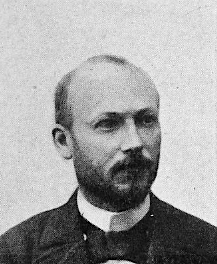Paul Jean-Baptiste Gasq(30 March 1860 – 28 October 1944) was a Frenchsculptor,born inDijon.[1]


Life
editHis father was a railway employee who was often absent. He began his studies at the School of Fine Arts in Dijon then, in 1879, enrolled at theÉcole des Beaux-ArtsinParis,where he took thePrix de Romein 1890 and studied there until 1894.[2]He also won a Grand Prix at theExposition Universelle (1900).
From 1932, he was the curator of the Dijon Museum. In 1935, he was elected a member of theAcadémie des Beaux-Arts.He died in Paris
Work
edit- marble group symbolizingNational Education,at the tomb ofEugène Spuller,Père Lachaise Cemetery,Paris, circa 1896
- Medea,Jardin des Tuileries,1896
- marble andbronzestatue ofPresidentMarie François Sadi Carnot,Dijon, Place de la Republique, 1899, in collaboration withMathurin Moreau
- marble group,The Glory of the Generals of the Revolution,at thePantheon,Paris
- facadeallegoricalgroupLa Révélation artistique(orSculpture) at theGrand Palais,Paris, 1900
- Fountaine Subé, (with fellow sculptors Paul Auban and Louis Baralis),Reims,1906
- architectural bronzeSummer and Winterfor theWhiteleysdepartment store,Bayswater,London,1911
- the reliefLa mobilisation 1914,war memorial in Dijon, 1923
- monumental marine fountain,Square Louise-Michel,Montmartre,Paris, 1932
- L'Electricitéon the facade of theGare de Lyon
Wikimedia Commons has media related toPaul Gasq.
References
edit- ^Peigné, Guillaume,... (2012).Dictionnaire des sculpteurs néo-baroques français, 1870-1914(in French). Paris: Éd. du CTHS. pp. 250–256.ISBN978-2-7355-0780-1.OCLC828238758.
{{cite book}}:CS1 maint: multiple names: authors list (link) - ^The Monumental News.R.J. Haight. 1896. p. 502.
External links
edit- Paul Gasqin American public collections, on the French Sculpture Census website